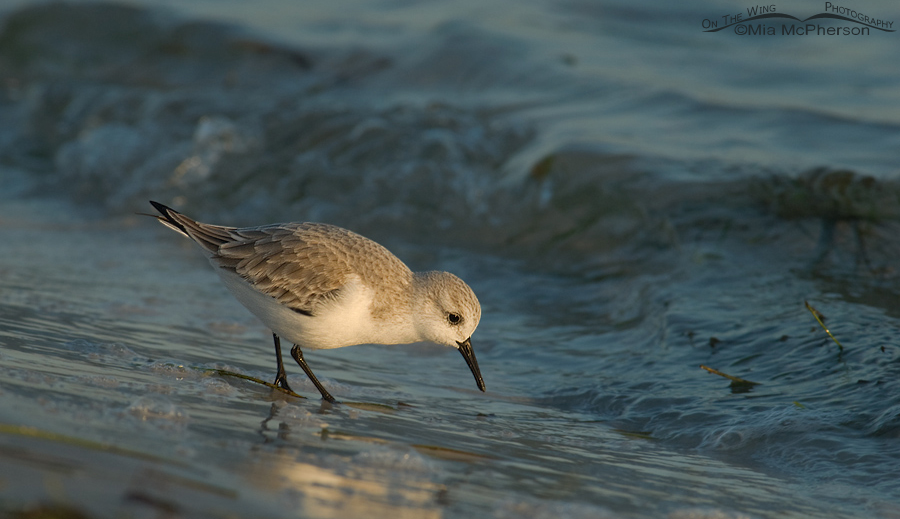Sanderling without rotation adjustment – D200, handheld, f9, 1/250, ISO 320, 80-400mm VR at 400mm, natural light
Proper rotation can make an image work. Improper rotation can cause the the person viewing to wonder what isn’t right about an image. Usually when birds are in flight and have nothing but sky behind them rotation isn’t always crucial, but if there is a visible straight line horizon it is easy to see when and how much the image needs to be rotated.
There are times, for instance when a bird is standing on sand, dirt or other feature that you may have to make a choice about the best rotation adjustment.
When a bird is in water you can usually line up some part of the reflection to get the proper rotation adjustment, the catchlight in the eye, reflection of some body part or by the specular highlights present in the water.
There are times though where the shoreline slopes down to the water that can be difficult. The Sanderling (Calidris alba) image above was taken while I laid on sand that was sloping down towards the shoreline where the waves were washing upwards onto shore and as they flowed back down the bubbles on the water surface were on a slant. Most people would feel that this image needs to be rotated.
The same Sanderling with rotation adjustment – D200, handheld, f9, 1/250, ISO 320, 80-400mm VR at 400mm, natural light
This is the same image with some rotation adjusment applied. I used a specular highlight and lined up its reflection to make the adjustment as many photographers would do in this case.
For me, the problem is that I like both presentations, the one with the natural slope down towards the water and the one with rotation adjustment applied. I’m not sure which one I like best.
Mia




Great topic Mia. In most instances the need for rotation is quite obvious, but in your example the dilemma is equally obvious. No right answer? Perhaps, but in looking at the two images the original shot seems the correct choice to me. Something that I see in the wave action behind the subject that just looks more natural. Thanks for posting this subject…certainly something to wrap your mind around.